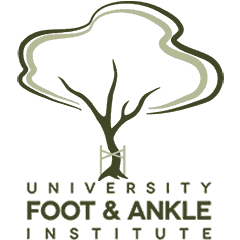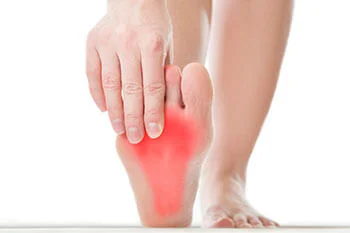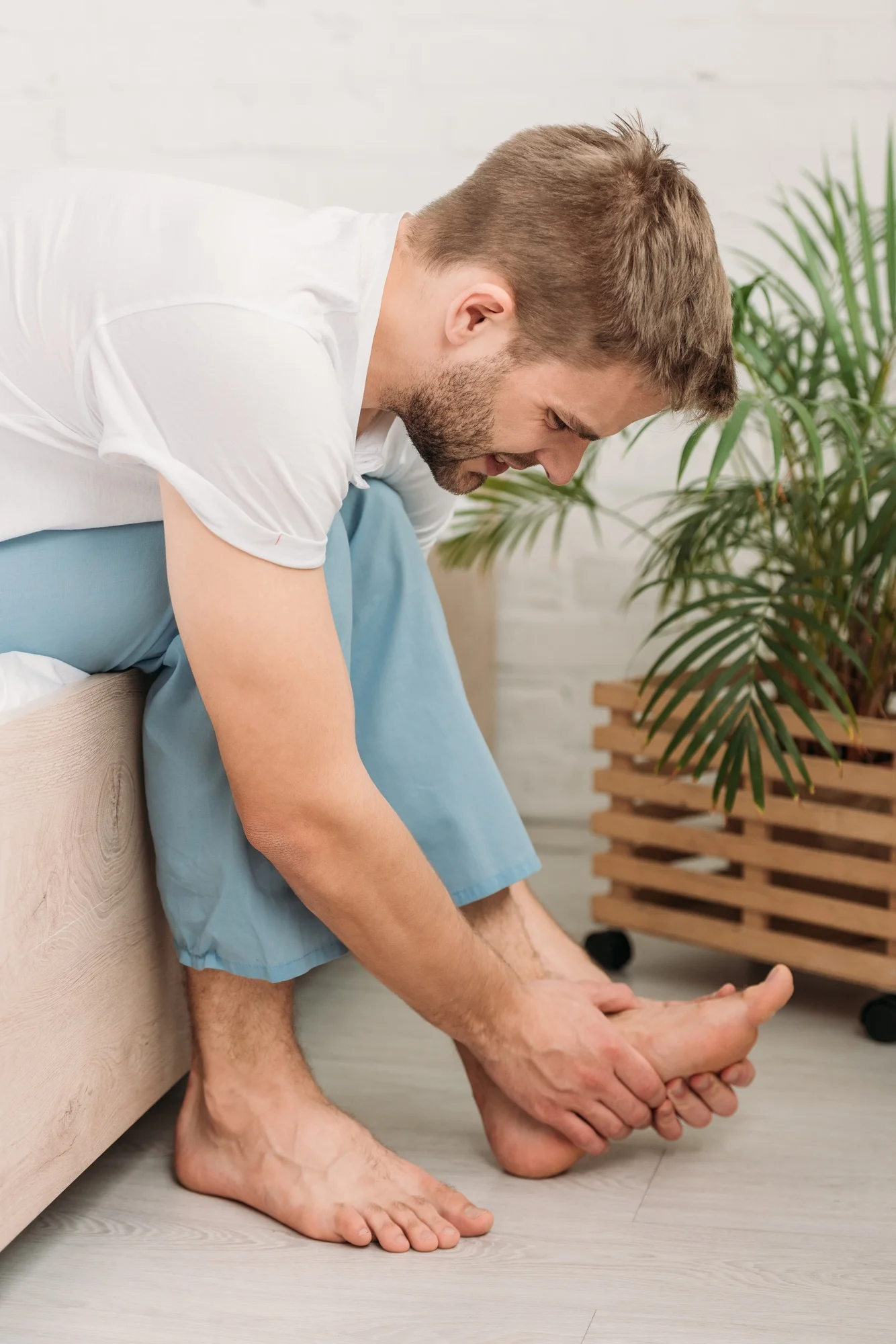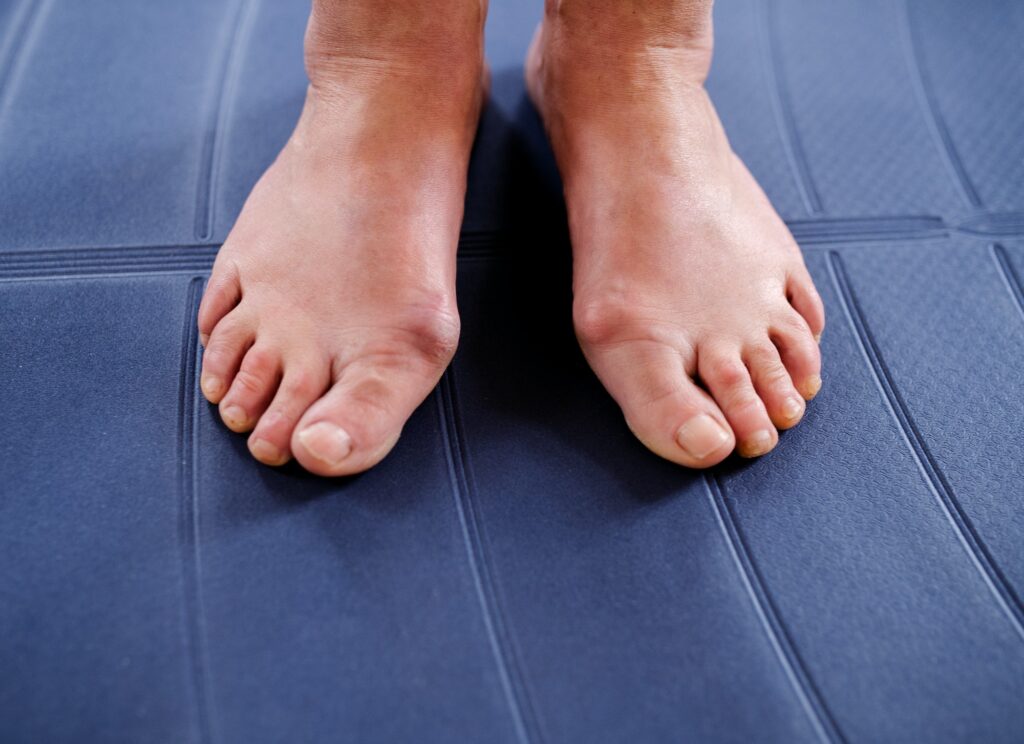Table of Contents
Overview
A bunion is a painful bony bump that is located at the base of the big toe. Bunions are caused when extra pressure is put on the big toe consistently or over several years. No matter whether your bunion is big or small, it’s important to see a board-certified podiatrist to ensure it doesn’t get worse with time. Walking will become more painful the bigger the bunion becomes, and your foot’s structure will physically change. Severe bunions angle over the second toe, causing the other toes to crowd each other and also become misaligned.
Bunions are very common. Our podiatrists have ample experience treating them both surgically and non-surgically. The sooner we see you, the sooner we can help!
Symptoms of Bunions
Besides noticing a bump at the base of your big toe, you may also experience one or more of the following symptoms:
- Pain and stiffness in the big toe
- Redness
- Unable to move or bend your big toe
- Corns or calluses
- Numbness around the big toe
- Swelling
- Pain when wearing tight shoes
Causes of Bunions
Conditions Caused by Bunions
Without medical attention, a bunion can cause other foot problems:
- Hammertoe: Since bunions force the big toe towards the second toe, the smaller toes can easily be pushed out of alignment. When a smaller toe is misaligned, it can become a hammertoe. This occurs when the toe has an abnormal bend in the middle joint.
- Calluses: With the toes crowding into each other due to the bunion, calluses can develop on any of the toes that are rubbing against each other.
- Bursitis: With severe bunions, a patient may experience bursitis where the fluid-filled sac near the joint becomes inflamed and causes pain.
Treatment Options
Unfortunately, bunions don’t just go away on their own. Our podiatry team has several treatment options, depending on the severity of your bunion.
Nonsurgical Options
The quickest solution to relieving the pain from bunions is to buy supportive shoes with a wide toe box. Other options include:
- Padding for the inside of shoes
- Custom orthotics to relieve the pressure on your toes
- Toe spacers to prevent crowding and calluses
- Pain relieving medicine to reduce pain or swelling
- Physical therapy exercises to strengthen the toes and keep them aligned
- Icing for pain relief
Your podiatrist will likely order an x-ray to evaluate the severity of your bunion and to see the alignment of your toes. An x-ray can also help the doctor see if there is any arthritis.
Surgical Options
Surgery is always considered a last option. However, if it is becoming difficult or painful to walk – and if none of the conservative treatment options have helped – it may be time to discuss surgery. There are a variety of different surgical treatment options; it’s not one-procedure-fits-all.
One of our board-certified podiatrists and surgeons will evaluate your individual bunion and propose the best surgical option for you.
Tips for Preventing Bunions
Looking to avoid a bunion? Your best bet is going to be quality footwear. Avoid high heels or narrow shoes with pointed toe boxes. Talk to your provider about which shoes they recommend and/or visit a local specialty shoe store.
Call our office today if you have a bunion or if you notice a bump on your big toe!
FAQs
Board-Certified Podiatric Foot and Ankle Specialist, Dr. Gary Briskin, DPM, FACFAS, began his medical training by serving a residency at Flint General Hospital in Michigan. Once completed, he established a practice in Century City Hospital, where he soon became chief of podiatric surgery.
Dr. Briskin is a Diplomat of the American Board of Podiatric Surgery and a Fellow of the American College of Foot and Ankle Surgeons. He also serves as an assistant clinical professor at the UCLA School of Medicine and is co-founder and co-director of University Foot and Ankle Institute.
Dr. Bob Baravarian DPM, FACFAS is a Board-Certified Podiatric Foot and Ankle Specialist. He is an assistant clinical professor at the UCLA School of Medicine and serves as Director of University Foot and Ankle Institute.
Dr. Baravarian has been involved in athletics his entire life and played competitive tennis in high school and college. He has an interest in sports medicine, arthritis therapy, and trauma/reconstructive surgery of the foot and ankle. He is also fluent in five languages (English, French, Spanish, Farsi, and Hebrew),







